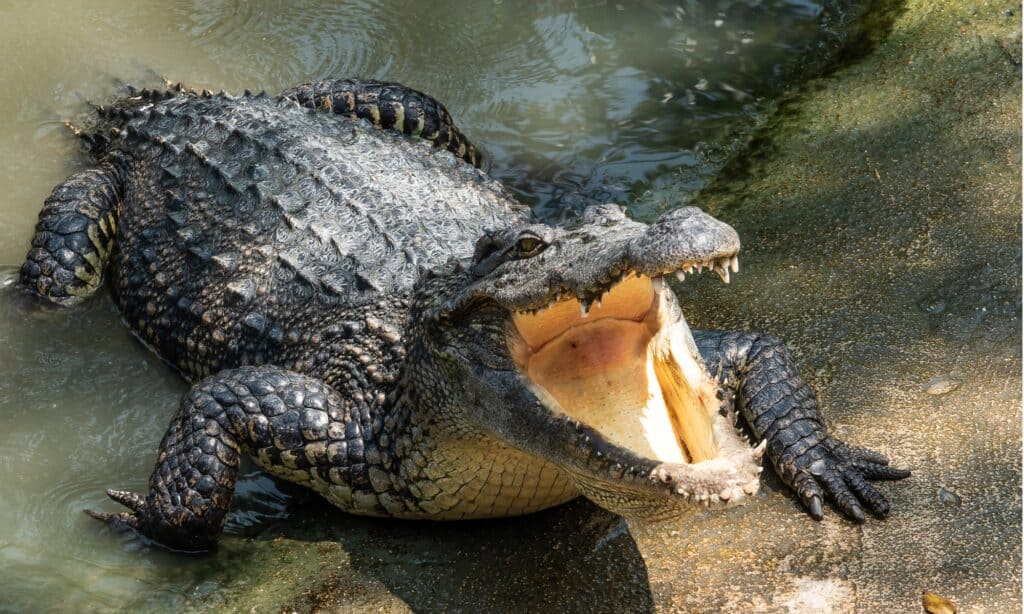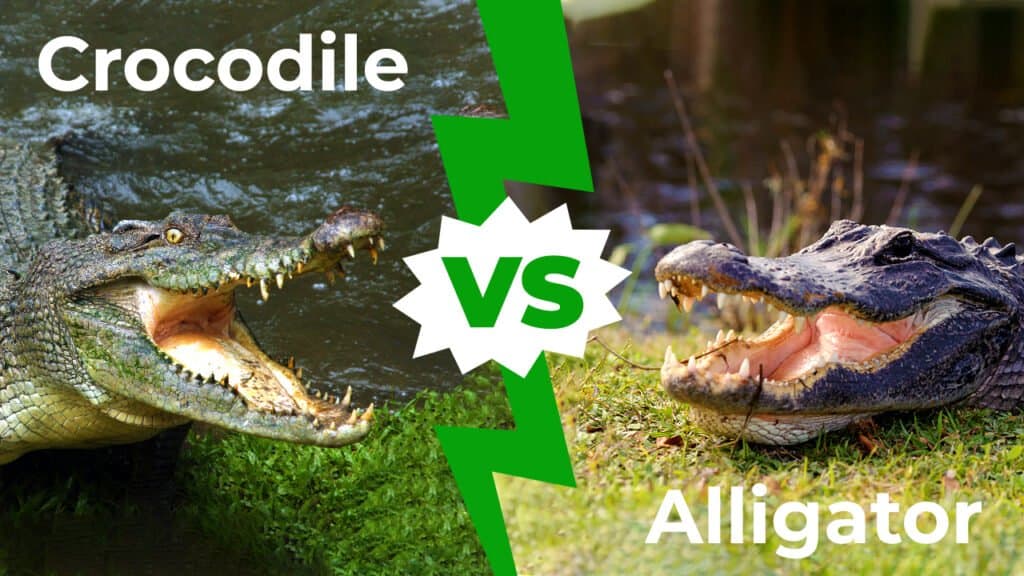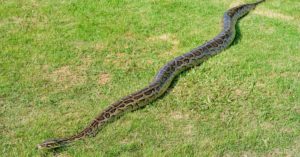If you are no expert in reptiles, it might be very hard to distinguish alligators from crocodiles, especially when the two species not only look very much alike but also can be spotted in almost the same habitats.
Alligators and crocodiles are among the strongest and most terrifying predators in the wild because they possess notoriously strong jaws and numerous sharp teeth and are both robust hunters on land and in water.
In short, alligators and crocodiles can attack anything they want and whenever they want to, may it be birds, rodents, fish, or snakes.
Alligators and crocodiles are both under the family Crocodilians, which includes all species of crocs, gators, and caimans.
Despite the similarities between the two largest reptiles in the world, many differences exist in their appearance, strength, bite force, habitat, and more.
But since they look almost the same, we can’t help but think: can crocodiles and alligators mate?
We all know that different species of one family can sometimes mate and produce a hybrid, but can crocodiles and alligators do that?
Below, we will explore the differences and similarities between crocodiles, if they can mate or not, and other interesting facts.
Can Crocodiles and Alligators Mate?

Crocodiles can not mate with alligators.
©iStock.com/AppleZoomZoom
The quick answer is no. Despite having a similar appearance, they are genetically too different, and although related, they long ago diverged into different genera. Alligators and crocodiles belong to different subspecies (Alligatoridae and Crocodylidae).
Thus, their genetic differences make it impossible for them to have progeny. So you may stop expecting and cross “crocogators” from your list because it won’t happen anytime soon!
It is, however, possible for crocodiles to breed with one another, and it is currently occurring in Cuba due to cross-breeding between American and Cuban crocodiles.
However, scientists are concerned that this occurs because it could lead to the extinction of the two separate species and leave just one crossbred species.
Why Can’t Crocodiles Mate with Alligators?

There is insufficient genetic diversity among crocodiles, alligators, and caimans for any one of the three to have a successful progeny.
©iStock.com/Bradley Proxmire
The chromosome disparity prevents many animals from breeding with each other even though they belong to the same family. In order for two animals to produce viable offspring, each parent has to have an even number of chromosomes. The horse, for instance, has 64 chromosomes, while the donkey possesses 62.
A horse and a donkey can mate and produce offspring because both parents have an even number of chromosomes. However, the resulting baby (a mule) is a hybrid and will only have 63 chromosomes and is therefore sterile.
The issue of mating is related to an animal’s genetic makeup in addition to chromosomes, and they cannot have offspring if the DNA they carry does not match. For crocodilians, there is an insufficient genetic similarity among crocodiles, alligators, and caimans for any one of the three to have a successful progeny with one another.
Additionally, habitat and dietary variations would make it challenging for any hypothetical progeny to survive.
Where Do Crocodiles and Alligators Live?
Crocodiles and alligators are both members of the crocodilian family and are found in different parts of the world. Crocodiles are found in saltwater and freshwater habitats in tropical regions of Africa, Asia, Australia, and the Americas, while alligators are found in freshwater habitats in the southeastern United States and China.
Alligators are typically found in freshwater habitats such as swamps, marshes, and wetlands, as well as in slow-moving rivers and lakes. They are native to the southeastern United States, specifically in the states of Florida, Georgia, Alabama, Mississippi, North and South Carolina, Louisiana, and Texas. In China, alligators are found in the Yangtze River region.
American alligators are known to be relatively adaptable and can also survive in brackish water. Crocodiles, on the other hand, are found in both saltwater and freshwater habitats in tropical regions around the world.
Can Alligators and Caimans Mate?
Alligators and caimans are also related, making us wonder if these two animals can breed. Although they are both reptiles, they differ greatly genetically and physically. The caiman, for instance, lacks a bone septum between its nostrils. In comparison to alligators, their teeth are also longer and more pointed. As a result, the two species cannot reproduce together.
What is a Crocodile Hybrid?
There have been records of a crocodile crossbreed that have been worrying scientists for some time now. Crossbreed offspring produced by mating Cuban and American crocodiles pose a threat to the Cuban species’ existence, which has declined to only 4,000 wild animals in two independent Cuban swamps. The International Union for Conservation of Nature (IUCN) has placed the ten-foot-long reptile on its severely endangered species list.
The IUCN does not classify American crocodiles, which are present throughout the Caribbean, as threatened. Due to agricultural practices, the last surviving freshwater habitat of the Cuban crocodile has seen an increase in animal activity. The Cuban crocodile is perhaps the most terrestrial of the crocodile species, and unlike other crocodiles, it walks instead of wallowing on its belly.
DNA samples from 89 wild crocodiles and 2 captive crocodiles were collected for a study. Interestingly, the findings revealed that American crocodile species in Cuba and other parts of Central America are more strongly linked to Cuban crocodiles than other American crocodile populations.
This shows that the breeding between the American and Cuban species occurs more often than previously believed. Genes mix when distinct species mate to produce crossbreds; eventually, one lineage may drive out the other.
Are Crocodiles and Alligators Different?

Given that they are members of the same evolutionary group, alligators and crocodiles are sometimes mistaken for one another. They both resemble lizards and are enormous reptiles with elongated snouts, long tails, stubby legs, thick skin, and massive teeth. However, these two species are different in so many ways. For one, alligators live exclusively in freshwater, while crocodiles can live both in fresh and saltwater.
Appearance
Although alligators and crocodiles belong to the Crocodilia order, they are distinct species. The size, color, and shape of the snout of alligators and crocodiles make them distinctive animals. For instance, alligators are smaller and shyer than crocodiles, have a U-shaped snout, and are black or gray with a cream-colored bottom. Conversely, crocodiles have a V-shaped snout, are larger, more aggressive, and primarily green or brown in color.
Alligators and crocodiles also differ significantly in size. An alligator can grow between 8.2 feet and 11.2 feet long and weigh 400 lbs to 800 lbs. Conversely, crocodiles are much bigger, reaching 10 feet to 20 feet long and weighing a whopping 300 lbs to 2,000 lbs.
Habitat
Although each animal lives in other areas as well, alligators and crocodiles share a tiny area of the United States but have distinct ranges and habitats that only temporarily cross. Alligators are only found in the southern United States and China, while crocodiles are spread throughout Central America, South Florida, Egypt, Asia, Oceania, South America, and 25 other African countries.
Furthermore, alligators love to reside in freshwater habitats, including marshes, rivers, lakes, wetlands, and ponds. In contrast, crocodiles may survive in lagoons, islands, rivers, mangrove swamps, and lakes because they are more tolerant of saltwater. Both species of reptiles are drawn to Florida because the environment combines these two ecosystems that draw them, allowing them to interact in this little part of the planet.
Diet
Crocodiles and alligators both have similar diets. They are carnivorous creatures, so they primarily eat fish, small mammals, birds, reptiles, and even other crocodilians. In addition to these animals, crocodiles tend to be more opportunistic hunters than alligators and will also feed on any carrion or eggs that they can find. Alligators do sometimes take advantage of carrion as well but usually stick to live prey such as frogs or invertebrates like crustaceans. Both species use their powerful jaws and sharp teeth to catch their prey which is then swallowed whole with the help of strong throat muscles.
Bonus: Does a Hybrid Python Exist?

Burmese
pythons have been found to have DNA of Indian rock pythons in the Florida Everglades, producing a hybrid snake that’s better suited to thrive than its non-hybrid cousins.
©dwi putra stock/Shutterstock.com
There’s no denying that hybrid animals are interesting, but at the same time, can be disturbing, as they can pose threats to other wildlife, as in the case of the Cuban crocodile. One U.S. state where it’s been proven that hybrid snakes exist is the state of Florida. Florida has been dealing with certain invasive snake species like Burmese pythons for decades. Burmese pythons pose a serious threat to wildlife in the Florida Everglades, as they are apex predators that have no natural predators there. They cover an area of 1,000 square miles in the Everglades with an estimated population of 100,000 snakes.
Certain captured pythons that were studied were found to be hybrids–they contained DNA of both Burmese pythons and Indian rock pythons, a smaller python species that does not have an established population in that region. The study concluded that about 3% of the 400 wild Burmese pythons were hybrids. It’s thought that these snakes were somehow crossed before coming to live in the swamps there. Researchers also believe this hybridization gives the invasive pythons an edge over their non-hybridized cousins. They’re better suited to thrive in a wide range of habitats than non-hybridized Burmese pythons, making them even more of a threat to Florida’s biodiversity.
Could these hybrid pythons become “super snakes” in size? Will they damage the ecosystem of the Everglades as they evolve? Only time will tell.
The photo featured at the top of this post is © Mia2you/Shutterstock.com
Thank you for reading! Have some feedback for us? Contact the AZ Animals editorial team.







